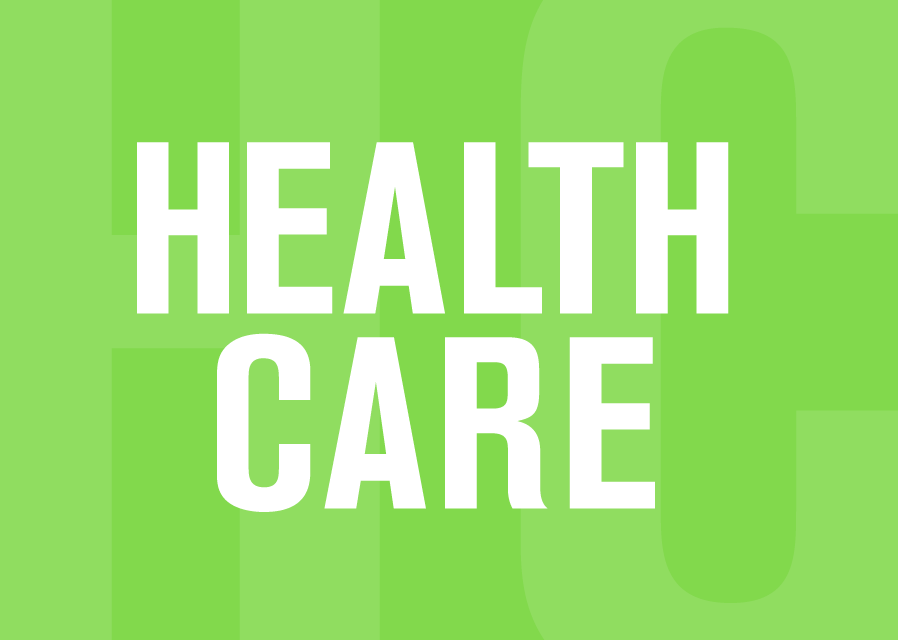The issue of federal health transfers to provincial governments is back in the news. and politics around it are as convoluted as ever. Even as the health care system faces mounting problems, the country’s political leaders have been digging in for a renewed fight over money.
Provincial Health ministers met last week with their federal counterpart to consider a federal offer to increase transfers, with conditions. At the behest of the Premiers, the ministers turned that down, and punted the issue to their bosses who are raring to take up the issue with the Prime Minister, mano a mano.
That demand from the Premiers came via a news release issued when the meeting ended Nov. 7. It was later revealed the communique from the Premiers had been prepared on Nov. 3, three days before the meeting of Health ministers even started. So much for urgent action on the health care crisis.
With a couple of exceptions those mostly-conservative Premiers are the same ones in power in the provinces the last time I addressed this topic, during the federal election campaign. Then, as now, the Premiers were united in their demand for a $28 billion increase in transfers, which they claimed would bring the federal share of total public health spending to 35 percent. And they wanted the money, no strings attached.
But Conservative Premiers in Alberta, Saskatchewan, Manitoba, Ontario, New Brunswick, P.E.I and Nova Scotia put politics ahead of getting the funds needed to provide quality health care to their citizens. They stayed mum about the fact that the federal Conservative platform offered a whole lot less health funding than the Liberals or the NDP. Partisanship trumped health care.
Quebec Premier Francois Legault, whose conservative party goes by a different name, CAQ, actually called on Quebeckers to vote for the Conservatives, even though that party’s promised increase amounted to peanuts – less than $4 billion over four years. The Trudeau Liberals spurned by Legault, promised a $25 billion increase over five years – this after already advancing emergency spending of about $6 billion to help provincial health systems deal with COVID-19.
As usual, the Liberals have been slow delivering on their election promises. The post-election 2022 federal budget delivered a $2 billion top-up to the Canada Health Transfer (CHT) to help provinces catch up on medical procedures cancelled or delayed due to COVID-19. It also delivered on year one of an NDP-inspired $5.3 billion five-year investment into a dental care program for children.
And this month’s budget update claimed that the CHT formula will see federal transfers to the provinces increase from $45 to $56 billion between now and 2026-7, an annual average increase of 6.1 percent. Even with dental care included that falls short of the promised $25 billion, so more is needed. But to hear the Premiers, you’d think the Liberal plan is to starve the health care system to death.
The Premiers’ ad campaign
In furtherance of their goal of tapping Ottawa for an extra $28 billion in health transfers – a 62 percent increase over what they are getting this year – the Premiers launched an ad campaign last month. It may pass the truth in advertising test, but only just.
The message, is delivered in the billboard campaign by two sombre looking male models: “As federal health care funding disappears so will our doctors/nurses.” The small print then claims that “federal health care funding has fallen to just 22 percent of the cost of health care in Canada and it continues to decline.” (My italics)
Federal sources have taken issue with the 22 percent claim, arguing that it is based solely on the amount of cash Ottawa sends to provinces and territories via the CHT as a share of total public health care spending. It doesn’t mention that the provinces benefit from about $20 billion a year in tax points, transferred to the provinces in 1977 for health care. If that is taken into account, federal funding clocks in at over 30 percent, not far off the Premiers’ ask.
One could also quibble with the ad’s claim that funding is disappearing – or is even in permanent decline. Before COVID-19 caused a spike in provincial health spending there was actually a slight increase in the federal share, from 22.0 percent in 2014-5 to 22.9 percent in 2018-9.
| Year | Transfer | Spending | Transfer% |
| 2014-5 | $32.1B | $145.5B | 22.0% |
| 2015-6 | $34.0B | $153.0B | 22.2% |
| 2016-7 | $36.1B | $155.6B | 23.2% |
| 2017-8 | $37.2B | $162.1B | 22.9% |
| 2018-9 | $38.6B | $168.6B | 22.9% |
| 2019-0 | $40.9B | $176.3B | 23.2% |
| 2020-1 | $45.9B | $203.0B | 22.6% |
| 2021-2 | $43.1B | $214.2B | 20.1% |
| 2022-3 | $45.2B | $218.1B | 20.7% |
Source: Finance Canada, Canadian Institute for Health Information
As the table shows, the federal share of significantly higher provincial spending dipped to 20.1 percent in 2021-22, but is forecast to increase slightly to 20.7 this year. So yes, the federal share of health spending is down the last two years, but it is hardly disappearing. And the drop needs to be considered in the context of major increases in overall federal transfers to provinces over those two years.
Provinces inconsistent
Far be it from me to defend the federal government record on health transfers. The decision by the Harper Conservative government to reduce from six to three percent the annual escalator for the CHT, while putting transfers on a per-capita basis, punished the Atlantic and other smaller provinces. The Trudeau government’s failure to restore the escalator or include demographic factors in the funding formula has been a major disappointment. But that doesn’t let provincial governments off the hook.
For starters, the COVID-related dip in the CHT was more than offset by the aforementioned increase in overall transfers – $36 billion between 2019-0 and 2021-2. Those transfers, up 46 per cent over two years, along with a strong economic recovery, have left most provinces in much better fiscal shape than the federal government. While the feds finished 2021-2 with a deficit of more than $80 billion, six provinces (including Nova Scotia) reported operating surpluses. So far this year, every province but Nova Scotia has reported either larger surpluses or smaller deficits than projected in their spring budgets.
Some of those provinces have also undermined their own message on the need for improved health funding by spending on other things, even as the health care systems for which they are responsible deteriorated daily. As a Globe and Mail editorial put it:
Leery observers will note that the provinces are crying poor at a time when they are recording much lower than expected deficits, or even budget surpluses – in fact, the provinces are collectively in surplus.The premiers have chosen to blow some of their windfalls on cheques to voters under the guise of inflation support (Quebec, Saskatchewan), or eliminating such things as car registration fees (Ontario). The provinces are also engaging in multibillion-dollar political boondoggles, such as Quebec’s plan to tunnel under the St. Lawrence River at Quebec City, or Ontario’s intention to build yet another superhighway in the Toronto suburbs. Every provincial dollar spent on vote-buying projects is a dollar that can’t be spent on health care.
In the “windfall blowing” category, we could also mention Ontario’s reduction of the tax rate on gas and fuel and New Brunswick’s decision to share some of its current $700 million-plus windfall on a tax cut for individuals making $45,000 a years or more. New Brunswick’s foray into trickle-down economics garnered Premier Blaine Higgs a rebuke from the Prime Minister – and questions from the media about how he squares that move with his demand for more health funding from Ottawa.
Years of austerity
The tendency of provincial governments to prioritize other things ahead of health care is not new. The current crisis, which is mainly one of human resources exacerbated by the pandemic, can be traced back years, when political rhetoric and the spending decisions were about restraining health care costs.
Both the Harper and Trudeau governments should be criticized for replacing the six percent escalator with a formula guaranteeing the greater of three percent or the nominal increase in GDP. The Harper government’s announcement in 2011 that the escalator would change as of 2016-7 may have been the motivation, but it was the provinces themselves who put the squeeze on health funding in subsequent years.
Between 2004-5, when the six percent escalator came into effect, and 2010-11 when the Harper Conservatives gave notice it would end in 2016-7, provincial health spending increased at an annual average rate of 6.87 percent, according to data from the Canadian Institute for Health Information.
But from 2011-12 to 2019-20 when the outbreak of COVID-19 forced spending increases, the annual average increase in provincial spending on health was only 3.64 percent. This despite the fact that in the five years between 2011-2 and the change in the formula in 2016-7 years, federal transfers continued to increase at six percent a year. The provinces spent those years calling intermittently on the federal government to maintain the six percent escalator, but at the same time kept their own increases well below that threshold.
It is held in some quarters that money, or the lack of it, is not the sole cause of problems in health care. However, to the extent that lack of funding through almost a decade of austerity can be blamed for the current mess, both levels of government are at fault.
Message over messenger
The alarmist ad campaign may yet win additional public support for their cause, but the Premiers’ recent spending choices and their all-or-nothing inflexibility leave much to be desired. Nevertheless, the basic message – that health transfers to the provinces need to increase – is backed up by years of analysis from the Parliamentary Budget Office (PBO).
Over the past decade the PBO’s annual Fiscal Sustainability Reports have shown that over the long term the current Canada Health Transfer will force most provinces to chose between raising taxes, cutting services or accumulating massive debt, while enabling the federal government to eliminate its debt. The explanation is straightforward: the formula transfers are capped by growth of the economy but health care costs are projected to grow faster than the economy. Solving the problem by putting the two on the same trajectory seems like a no-brainer.
But money is only part of it. The other issue is control. Some provinces, especially Quebec, have been adamant that the feds should increase transfers with no strings attached. That position seems to include relatively flimsy threads, like the proposal rejected last week by the Health ministers. In return for more cash, the feds reportedly wanted agreement on a national health human resource plan and a national data strategy.
There could be several devils lurking in the details, but provincial acceptance of that proposal, at least in principle, should also be a no-brainer. The Premiers need to call off the partisan ad campaign and explain to Canadians the holdup when the urgency of repairing the health care system is staring us in the face.
-30-





